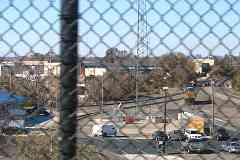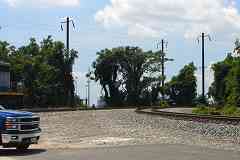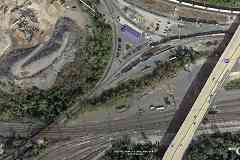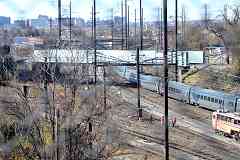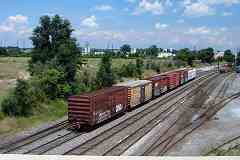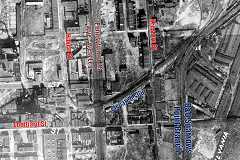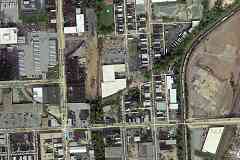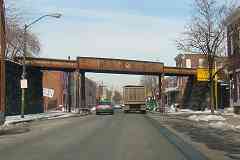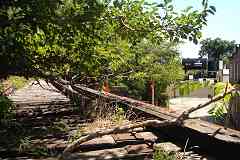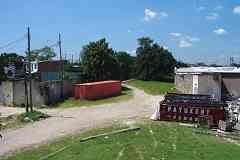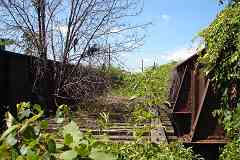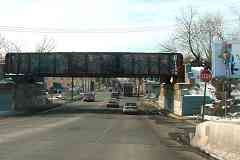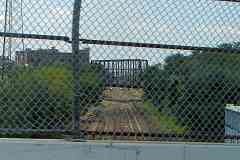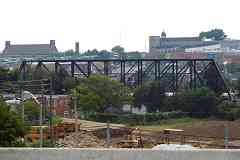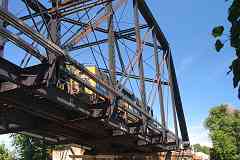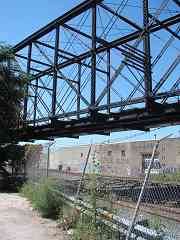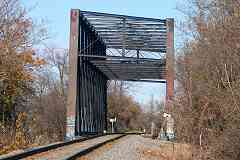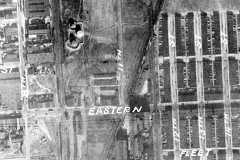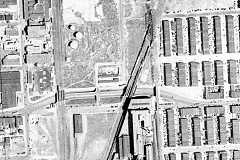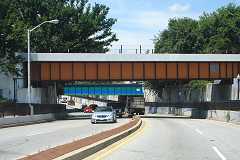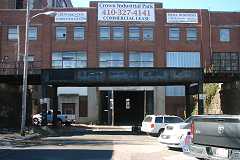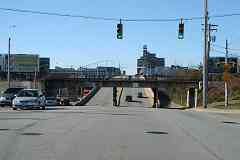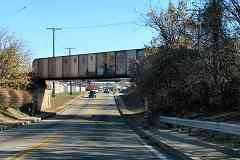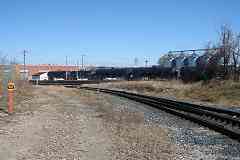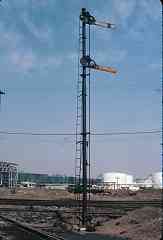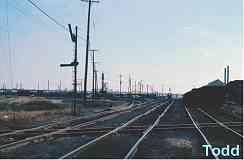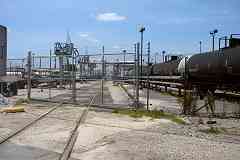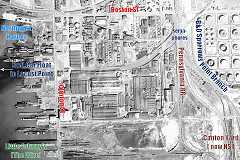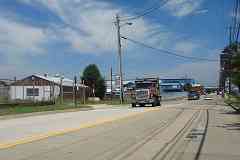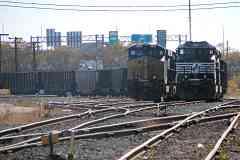|
The original B&O bridge spanning the Northeast Corridor was still around when
this view from above was snapped during 2014 or so. The CSX yard office's blue
roof appears purple in some aerial views. South of that is Norfolk Southern's
Bayview Yard through which passes the Northeast Corridor, marked by catenary.
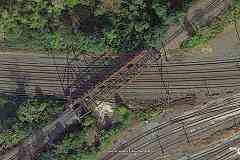 At bottom left, the SPB crosses over Amtrak. About 1885, the line received
this Whipple truss bridge that stood until replacement during 2016. It
had been one the last two Whipple truss rail bridges in Maryland.
The other survives (as of 2017) and will be seen later in this tour.
At bottom left, the SPB crosses over Amtrak. About 1885, the line received
this Whipple truss bridge that stood until replacement during 2016. It
had been one the last two Whipple truss rail bridges in Maryland.
The other survives (as of 2017) and will be seen later in this tour.
Surrounded by industry and active rail yards, this is an exceptionally
difficult area to reach on foot. The easiest views come from satellite
photos, trains, and from elevated I-895...
Links:
1977 LoC,
1977 LoC,
1979,
2016
| 